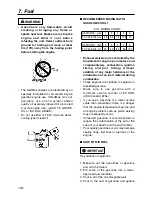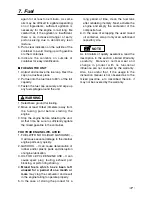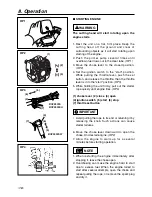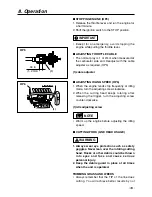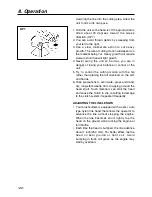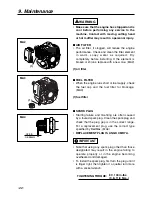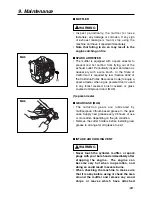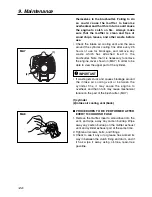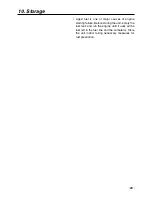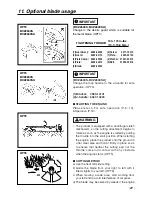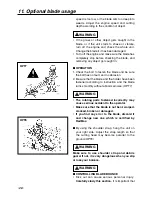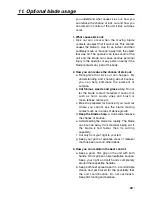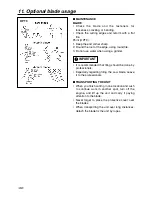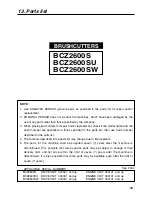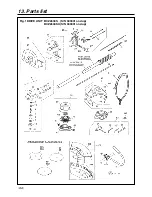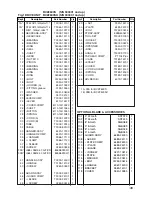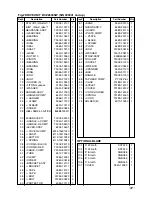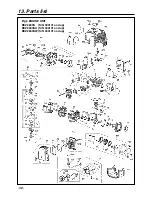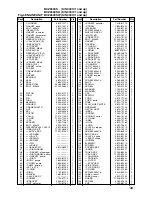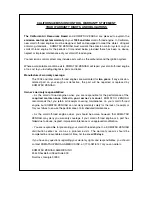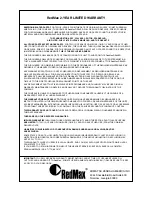
you understand what causes kick out, how you
can reduce the chance of kick out and how you
can remain in control of the unit if kick out does
occur.
1. What causes kick out:
• Kick out can occur when the moving blade
contacts an object that it cannot cut. This contact
causes the blade to stop for an instant and then
suddenly move or ”bounce” away from the object
that was hit. The operator can lose control of the
unit and the blade can cause serious personal
injury to the operator or any person nearby if the
blade contacts any part of the body.
2. How you can reduce the chance of kick out:
a. Recognize that kick out can happen. By
understanding and knowing about bounce,
you can help eliminate the element of
surprise.
b.
Cut fibrous weeds and grass only.
Do not
let the blade contact materials it cannot cut
such as hard, woody vines and brush or
rocks, fences, metal, etc
c. Be extra prepared for bounce if you must cut
where you cannot see the blade making
contact such as in areas of dense growth.
d.
Keep the blade sharp.
A dull blade increase
the chance of bounce.
e. Avoid feeding the blade too rapidly. The blade
can bounce away from material being cut if
the blade is fed faster than its cutting
capability.
f. Cut only from your right to your left.
g. Keep your path of advance clear of material
that has been cut and other debris.
3. How you can maintain the best control:
a. Keep a good, firm grip on the unit with both
hands. A firm grip can help neutralize bounce.
Keep your right and left hands completely
around the respective handles.
b. Keep both feet spread apart in a comfortable
stance and yet braced for the possibility that
the unit could bounce. Do not overreach.
Keep firm footing and balance.
11. Optional blade usage
29
Summary of Contents for BCZ2600S
Page 2: ......
Page 32: ... 32 ...
Page 34: ...13 Parts list 34 Fig 1 DRIVE UNIT BCZ2600S S N 300001 and up BCZ2600SU S N 300001 and up ...
Page 36: ...13 Parts list 36 Fig 2 DRIVE UNIT BCZ2600SW S N 300001 and up ...
Page 43: ......


